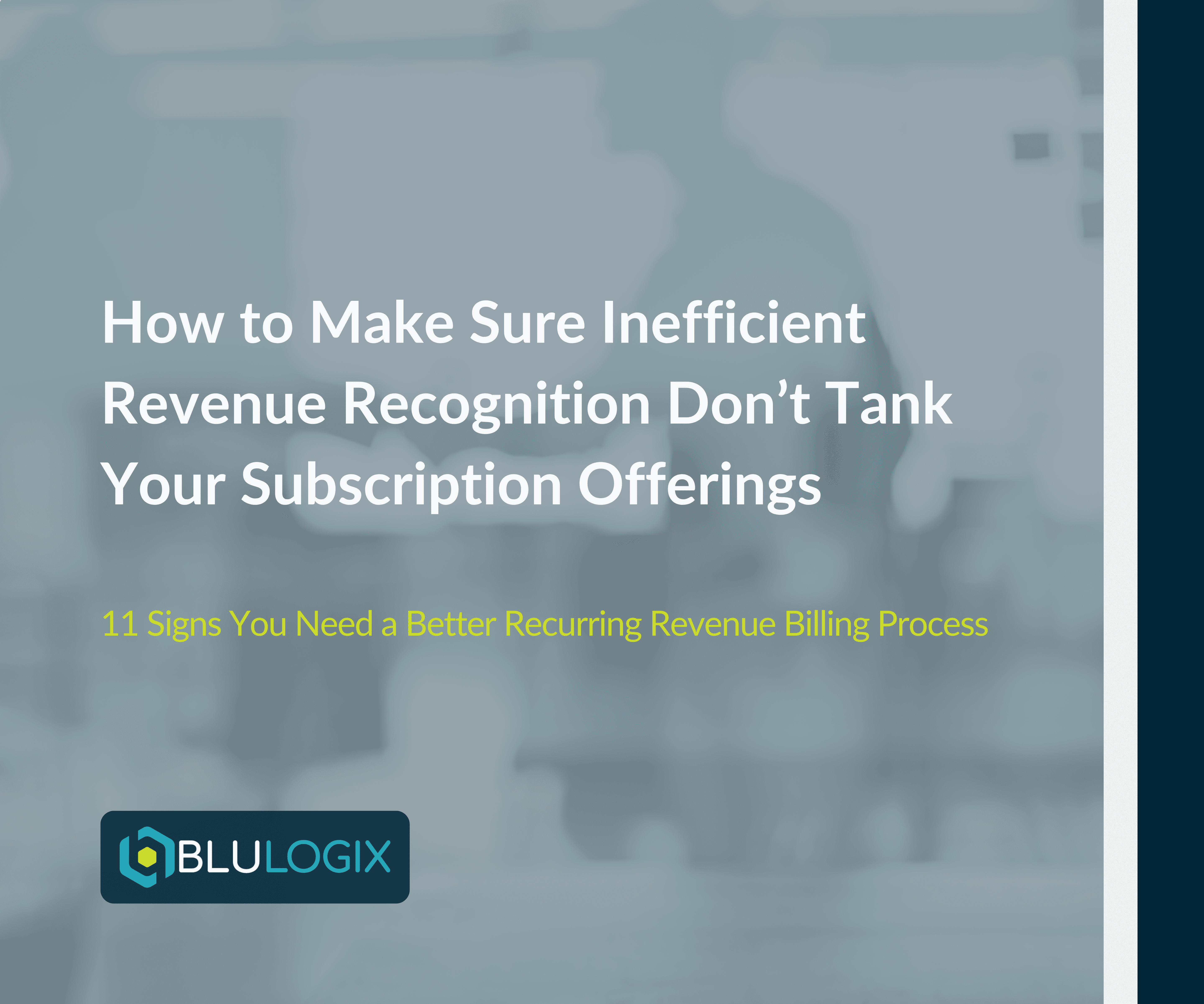Software-as-a-Service (SaaS) Billing Best Practices
Software-as-a-Service by its nature requires a robust recurring revenue billing platform. As the industry moves more and more to complex pricing, usage and consumption based billing and customized pricing scenarios (think seasonal for example), the requirements for meeting customer expectations become increasing critical.
We’ve taken a minute to catalog the specific best practices we’ve found after years of working with complex subscription clients to share. Bon Appetite!
At BluLogix, we’ve identified the following ten steps the Software-as-a-Service industry can take to manage subscription billing more effectively:
Take your business further with BluIQ’s flexible, scalable, enterprise-grade intelligent billing solutions.
Clear and Transparent Pricing: Provide transparent pricing plans that clearly outline the features, benefits, and limitations of each subscription tier. Avoid hidden fees or confusing pricing structures. Make it easy for customers to understand what they are paying for.
2. Flexible Billing Models: Offer various billing models to accommodate different customer preferences. For example, you can provide monthly, quarterly, or annual subscription options. Additionally, consider offering usage-based billing or tiered pricing based on usage levels.
3. Self-Service Account Management: Enable customers to manage their subscription accounts easily. Provide a self-service portal where customers can upgrade, downgrade, or cancel their subscriptions without having to go through customer support. This empowers customers and reduces administrative overhead.
4. Proactive Subscription Renewal Reminders: Send timely and automated renewal reminders to customers before their subscription expires. Provide clear instructions on how to renew or update billing information. This helps reduce churn and ensures customers have uninterrupted access to your service.
5. Usage Analytics and Insights: Provide customers with usage analytics and insights to help them understand the value they are receiving from your service. This can help justify the cost of the subscription and reinforce the value proposition.
6. Dunning Management: Implement a dunning management system to handle failed payments and credit card declines. Send automated notifications to customers when a payment fails and provide an easy way for them to update their payment information. Set up a process to follow up with customers to resolve payment issues promptly.
7. Upfront Terms and Conditions: Clearly communicate the terms and conditions related to subscription billing, including billing cycles, refund policies, and any potential price changes. Ensure customers have access to this information before subscribing to your service to avoid any surprises later.
8. Proactive Customer Support: Provide prompt and efficient customer support for billing-related inquiries. Have a dedicated team that can assist customers with billing issues, refund requests, or questions about their subscription. Timely and helpful support can significantly enhance the customer experience.
9. Customer Feedback and Iteration: Continuously gather customer feedback and iterate on your billing processes based on their input. Regularly review customer satisfaction surveys, conduct user interviews, and monitor customer support interactions to identify areas for improvement.
10. Integration with Payment Gateways and Accounting Systems: Integrate your subscription billing system with popular payment gateways and accounting software. This simplifies the billing process, automates invoice generation, and ensures accurate financial reporting.
By implementing these strategies, Software-as-a-Service companies can enhance the subscription billing experience for their customers, reduce churn, and improve overall customer satisfaction.
Take your business further with BluIQ’s flexible, scalable, enterprise-grade intelligent billing solutions.
Learn more

How to Make Sure Inefficient Revenue Recognition Don’t Tank Your Subscription Offerings
Efficient revenue recognition is crucial for accurate financial reporting and compliance with accounting standards such as ASC 606 and IFRS 15. These standards require

Using Your Subscription Billing Platform to Scale Your Recurring Revenue
Scalability in the realm of billing systems is vital for businesses anticipating growth in customer base or transaction volume. A billing system that cannot

Leveraging Pricing Flexibility to Increase Recurring Revenue
In today’s highly competitive market, the ability to adapt pricing strategies swiftly and effectively is crucial for staying ahead. Many businesses face the challenge

